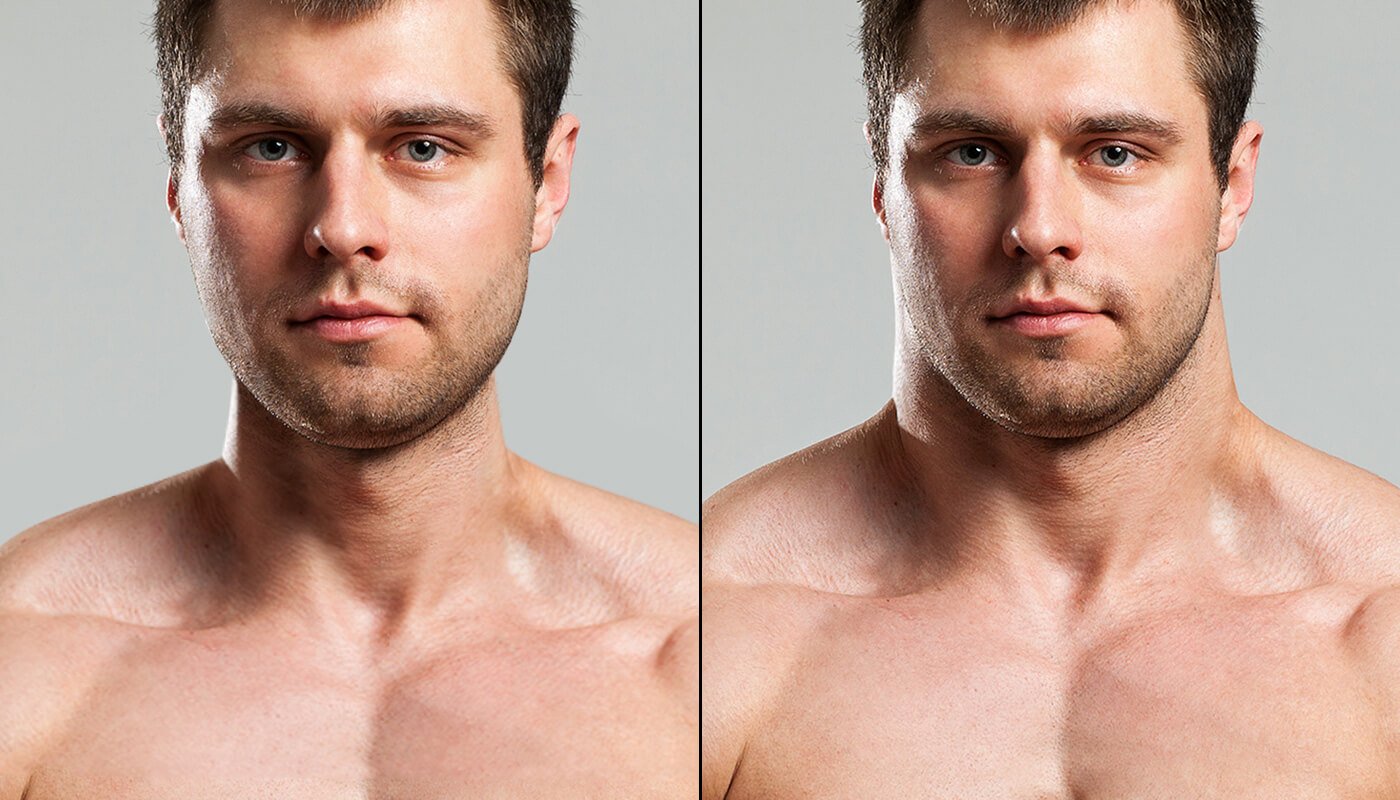Ever dealt with neck pain, stiffness, or poor posture? A weak neck isn’t just uncomfortable, it can lead to headaches, imbalances, and even a higher risk of injury.
The good news? Strengthening your neck isn’t complicated. With the right exercises, you can build a powerful, resilient neck that supports your daily activities, enhances athletic performance, and even reduces pain.
And one piece of equipment that can help you strengthen your neck is the Neck Harness for Weight Training, a game-changer for those looking to build a thicker, stronger neck.
In this blog, we’ll walk you through powerful exercises to build a stronger, more resilient neck so you can move, train, and live pain-free.
Anatomy of Your Neck Muscles

Our neck is made up of muscles that allow it to flex, twist, turn, and extend. Below is a table to illustrate this more clearly:
|
Neck Muscles |
Located At |
Function |
|
Sternocleidomastoid |
Front of the neck |
Rotating and flexing the neck |
|
Trapezius |
Neck to mid-back |
Shrugging and neck extension |
|
Levator Scapulae |
Back and side of the neck |
Elevating the scapula, side bending of the neck |
|
Scalene Muscles |
Each side of the neck |
Neck flexion, side bending, and rotation |
|
Suboccipital Muscles |
The base of the skull |
Control fine movements and posture of the head |
|
Longus Colli & Capitis |
Deep in the neck |
Neck flexion and stability |
|
Platysma |
Front of the neck |
Facial expressions, neck tension |
How to Get a Stronger Neck: Best Exercises for Neck Strength & Stability
Below, we’re sharing some of the best neck strengthening exercises to help you build muscle, improve posture, and reduce the risk of injuries. Whether you're using a harness, resistance bands, or bodyweight movements, these exercises will enhance your neck stability and overall strength.
Neck Flexion with Neck Harness
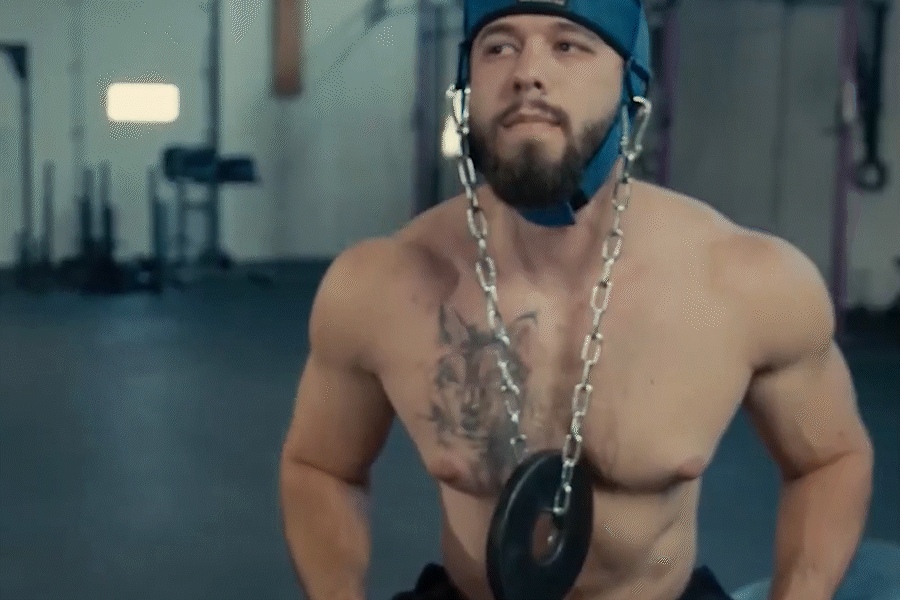
Neck flexion with a Neck Harness is a powerful exercise for strengthening the front neck muscles, improving posture, and enhancing overall stability. It helps build a stronger, more supported neck, contributing to better performance and resilience.
How to Perform:
- Secure the neck harness around your head and attach weight plates to the chain.
- Sit on a bench with your back straight and the harness securely on your head.
- Slowly lower your head forward while keeping your back straight.
- Raise your head back to the starting position, focusing on using your neck muscles.
- Perform 3-4 sets of 10-15 repetitions.
Neck Extension with Neck Harness
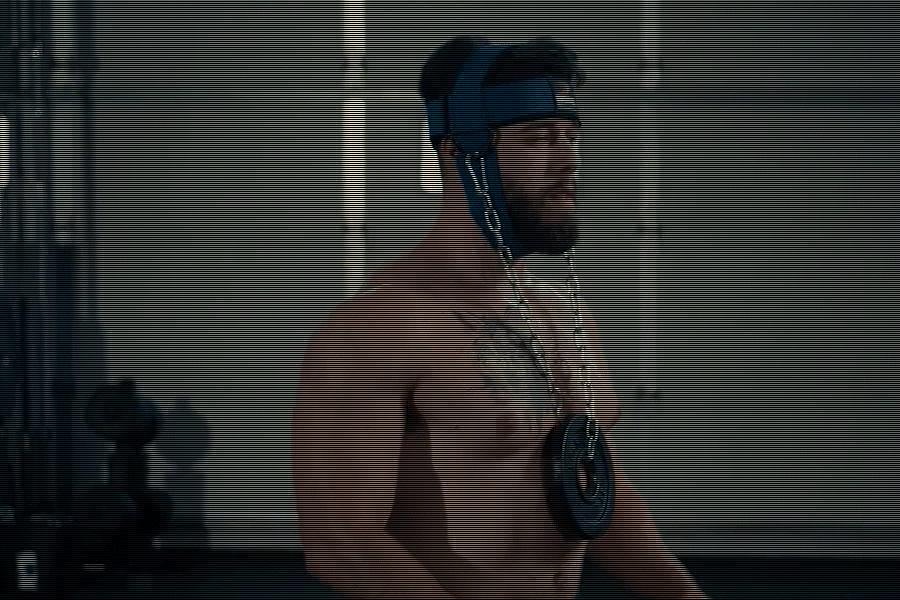
Neck extension with a harness is a targeted exercise that strengthens the posterior neck muscles, including the trapezius, splenius, and levator scapulae. It enhances neck stability, improves posture, and helps prevent strain-related injuries, especially for athletes, weightlifters, and combat sports enthusiasts.
How to Perform:
- Secure the neck harness around your head and attach weight plates to the chain.
- Sit on a bench facing away from the machine with the harness on your head.
- Slowly extend your neck backward, focusing on using your neck muscles.
- Return your head to the starting position.
- Perform 3-4 sets of 10-15 repetitions.
Lateral Neck Flexion with Neck Harness

Lateral neck flexion with a neck harness is a powerful exercise for strengthening the side neck muscles, particularly the sternocleidomastoid and scalene muscles. Strengthening the lateral neck muscles can also help alleviate uneven muscle tension, improve posture, and enhance performance in combat sports, football, wrestling, and other high-impact activities.
How to Perform:
- Secure the neck harness around your head and attach weight plates to the chain.
- Sit on a bench with your back straight and the harness on your head.
- Tilt your head to the side, bringing your ear towards your shoulder while keeping your back straight.
- Return your head to the neutral position.
- Repeat the movement to the opposite side.
- Perform 3-4 sets of 10-15 repetitions on each side.
Neck Rotation with Neck Harness

Neck rotation with a harness strengthens the rotational neck muscles, improving mobility, flexibility, and stability. It targets the sternocleidomastoid, splenius capitis, and deep cervical muscles, making it ideal for athletes, martial artists, and those with neck stiffness. This exercise enhances head control, reduces injury risk, and supports overall neck function.
How to Perform:
- Secure the neck harness around your head and attach weight plates to the chain.
- Sit on a bench with your back straight and the harness on your head.
- Slowly rotate your head to one side as far as comfortably possible, keeping your chin level.
- Return your head to the neutral position.
- Repeat the movement to the opposite side.
- Perform 3-4 sets of 10-15 repetitions on each side.
Neck Isometric Holds
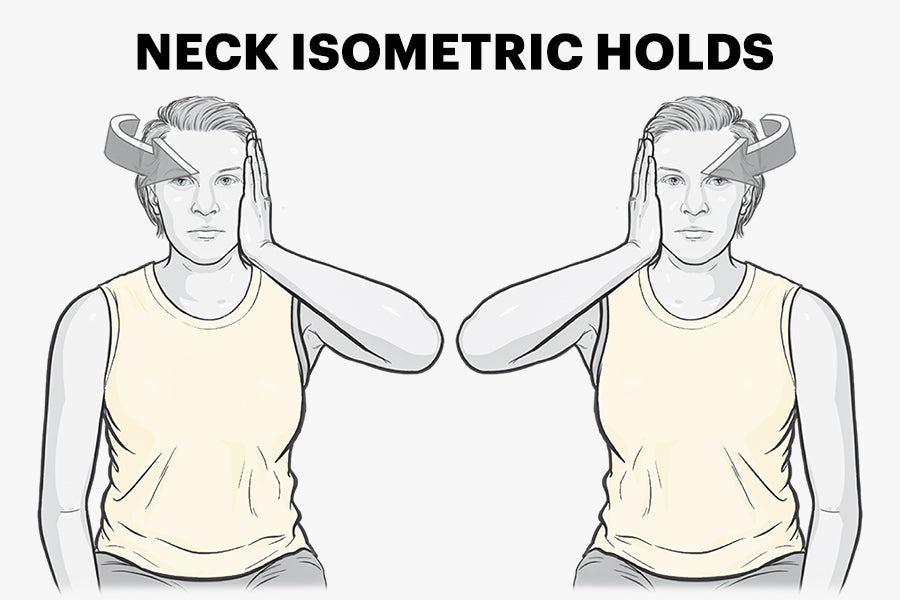
Neck isometric holds are essential for building strength, stability, and endurance in the neck muscles without requiring movement. This exercise engages the sternocleidomastoid, trapezius, and deep cervical muscles, helping to prevent injury, improve posture, and reduce strain from daily activities or sports.
How to Perform:
- Stand or sit with your back straight and your shoulders relaxed.
- Place your hand on one side of your head, and gently resist with your neck muscles, trying to tilt your head to the side against the resistance of your hand.
- Hold for 5-10 seconds, then switch to the other side.
- You can perform isometric holds in flexion, extension, and lateral flexion directions.
- Repeat each hold for 3-4 sets, holding for 5-10 seconds on each side.
Neck Curls
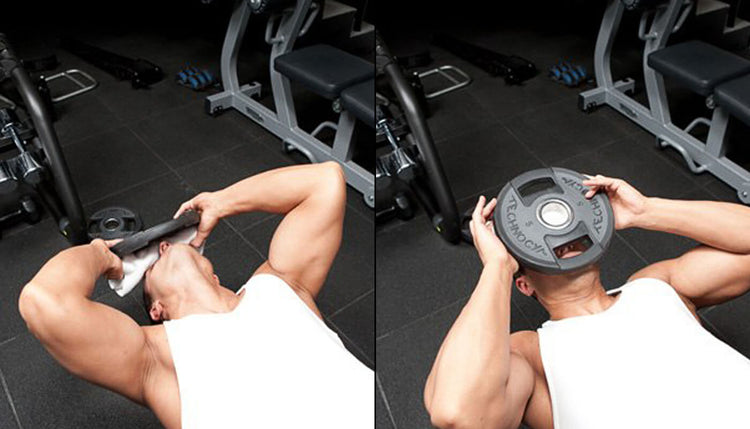
Neck curls are a highly effective exercise for building neck strength and thickness, particularly targeting the sternocleidomastoid muscles at the front of the neck. This movement helps improve posture, enhance stability, and reduce the risk of neck strain or injury, making it ideal for athletes, wrestlers, and anyone looking to develop a stronger, more resilient neck.
How to Perform:
- Create a barrier between the weight plate and your head using a folded towel to prevent bruises and ridges.
- Get the DMoose weight plate, place it on your forehead, and try to move your chin toward the upper chest.
- Keep your arms and abs disengaged and focus only on your neck.
- You should feel intense neck contractions and lactic acid build-up; otherwise, you're doing it wrong.
Neck Extension with Weights
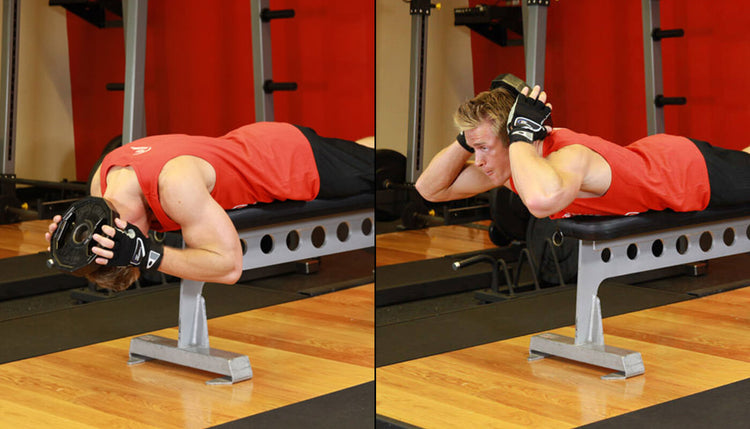
Neck extension with weights is a powerful exercise that targets the posterior neck muscles, including the trapezius, splenius, and spinal erectors. This movement helps build strength, improve posture, and enhance neck stability, making it especially beneficial for athletes, weightlifters, and combat sports enthusiasts.
How to Perform:
- Lay down on a bench with your neck extending beyond the edge.
- Place a weight plate on the back of your head, supporting it with both hands while keeping your elbows tucked in.
- Start with your neck flexed forward, looking down at the foot of the bench.
- Inhale, then lift your head and arms together while keeping tension in your neck.
- Exhale as you raise your head slightly above your shoulders. Avoid overextending.
- Keep your lower rib cage in contact with the bench, lower your head in a controlled motion, and repeat.
Related Article: 15 Best Weight Plate Exercises You Can Do at Home
Neck Extension without Weights
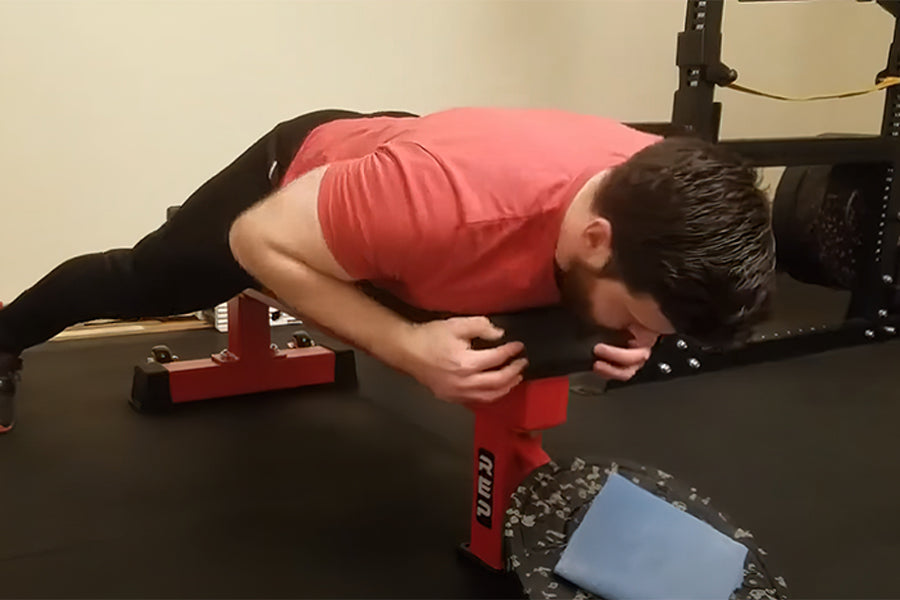
Neck extension without weights is a simple yet effective bodyweight exercise that strengthens the posterior neck muscles, including the trapezius and splenius. It helps improve posture, reduce neck strain, and enhance mobility, making it a great option for beginners, rehabilitation, or anyone looking to build neck strength without added resistance.
How to Perform:
- Lie on your stomach with your upper chest and shoulders lifted off the ground. Avoid lying completely flat.
- Maintain this position and slowly lower your chin toward your chest in a controlled motion.
- Raise your head back up until it's in line with your spine, keeping tension in your neck muscles.
- Repeat while maintaining proper form and control.
Neck Side Raises

Neck side raises are an excellent exercise for strengthening the lateral neck muscles, including the sternocleidomastoid and scalene muscles. This movement enhances neck stability, mobility, and balance, making it particularly beneficial for athletes, fighters, and those looking to prevent neck imbalances and reduce injury risk.
How to Perform:
- Lie on a bench with your head extending slightly beyond the edge.
- Place a weight plate on the side of your head, supporting it with your hand for control.
- Slowly lower your ear toward your shoulder, feeling the stretch in your neck.
- Raise your head back to the starting position, keeping tension in your neck muscles.
- Repeat for the desired reps, then switch sides.
Neck Flexion
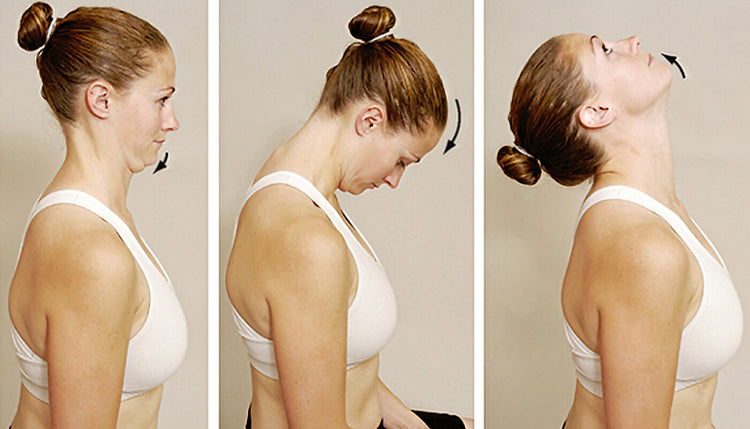
Neck flexion is a fundamental exercise for strengthening the front neck muscles, particularly the sternocleidomastoid. This movement improves posture, enhances stability, and reduces the risk of neck strain, making it ideal for athletes, weightlifters, and individuals recovering from neck discomfort.
How to Perform:
- Sit tall with a straight spine and upright posture.
- Slowly lower your head down, bringing your chin toward your chest.
- Return to the starting position in a controlled motion.
- Perform 3 sets of 12 reps, maintaining proper form throughout the exercise.
Neck Lateral Flexion
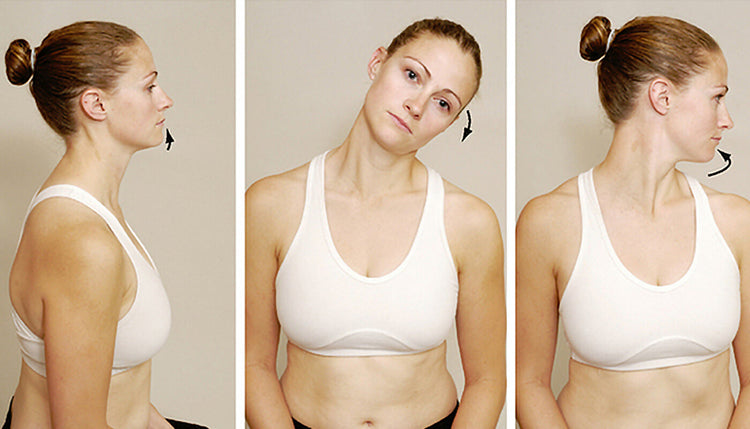
Neck lateral flexion is an effective exercise for strengthening the side neck muscles, including the sternocleidomastoid and scalene muscles. This movement helps improve neck mobility, posture, and stability, making it beneficial for athletes, weightlifters, and those recovering from neck strain or imbalances. This exercise can also be done without equipment.
How to Perform:
- Sit with proper posture, keeping your back straight and looking forward.
- Slowly tilt your head to the side, bringing your ear toward your shoulder.
- Keep your shoulders relaxed and flat. Avoid lifting them.
- Return to the starting position and repeat on the opposite side.
- Perform 3 sets of 12 reps, maintaining proper form throughout the exercise.
Dumbbell Shrugs
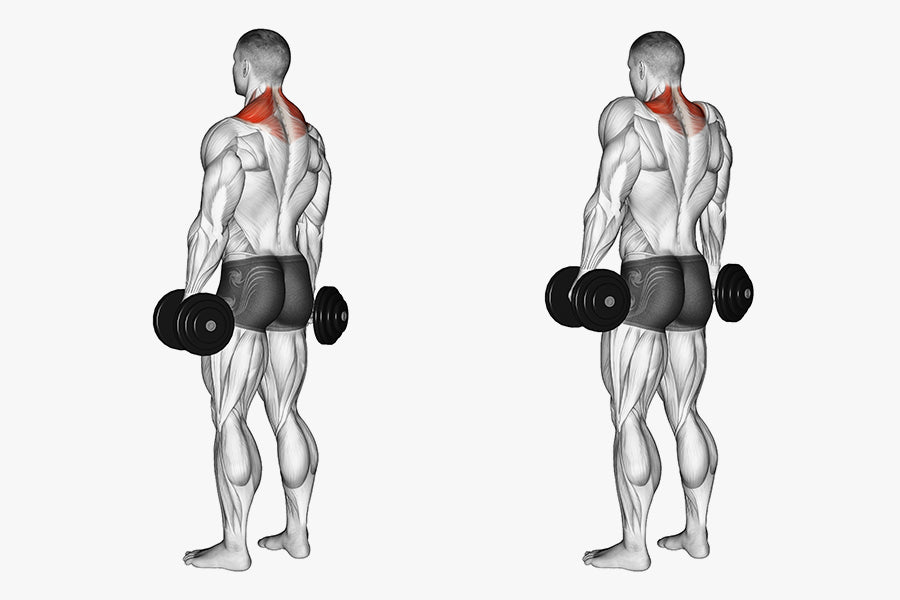
Dumbbell shrugs are a highly effective exercise for strengthening the trapezius muscles, which support the neck, shoulders, and upper back. This movement helps improve posture, enhance neck stability, and reduce the risk of shoulder and neck strain.
Use dumbbells to allow for greater resistance than body weight, leading to increased muscle mass and strength in the upper back and neck.
How to Perform:
- Hold a dumbbell in each hand with your arms relaxed at your sides.
- Lift your shoulders toward your ears, squeezing at the top.
- Pause briefly, maintaining control.
- Slowly lower your shoulders back down to the starting position.
Resistance Band Exercises for a Stronger Neck
Strengthening your neck with resistance bands is an effective way to build muscle endurance, improve posture, and reduce the risk of injuries. Unlike static stretches, resistance band exercises provide controlled resistance throughout the movement, helping to activate deep stabilizing muscles.
Neck Flexion with Resistance Bands
Neck flexion with resistance bands is a great way to strengthen the front muscles of your neck, improving stability and reducing strain from poor posture. This exercise helps develop better control over neck movements, making it beneficial for athletes, desk workers, and anyone looking to enhance neck strength.
How to Perform:
- Anchor a resistance band to a sturdy surface at head height.
- Sit or stand facing away from the anchor point and loop the band around the back of your head.
- Gently press your head forward against the band’s resistance.
- Hold for a second when your head is fully extended forward, then return to the starting position in a controlled manner.
- Perform 10–15 reps for 2–3 sets.
Neck Extension with Resistance Bands
Neck extension with resistance bands targets the muscles at the back of your neck, helping to improve posture, reduce neck strain, and enhance overall stability. This exercise is especially useful for those who experience forward head posture or stiffness from prolonged screen time.
How to Perform:
- Stand facing the anchor point with your feet shoulder-width apart.
- Keep your back straight and shoulders relaxed.
- Gently press the back of your head against the resistance of the band.
- Extend your neck backward, moving your head away from the anchor point.
- Hold this position for 2–3 seconds.
- Slowly release the pressure on the band and return your head to its natural position.
- Perform 2–3 sets of 10–12 repetitions.
Lateral Flexion Exercises with Resistance Band
Lateral flexion exercises with a resistance band help strengthen the muscles on the sides of your neck, improving stability and reducing the risk of imbalances. This movement enhances mobility and can help prevent stiffness or discomfort caused by poor posture or repetitive strain.
How to Perform:
- Stand perpendicular to the anchor point with your feet shoulder-width apart.
- Keep your body relaxed and maintain an upright posture.
- Gently press the side of your head against the band's resistance.
- Slowly tilt your head to the right, bringing your ear toward your right shoulder.
- Hold this position for 2–3 seconds, keeping the movement controlled.
- Return to the starting position and repeat on the left side.
- Perform 2–3 sets of 10–12 repetitions on each side.
Potential Risks of Neck Exercises
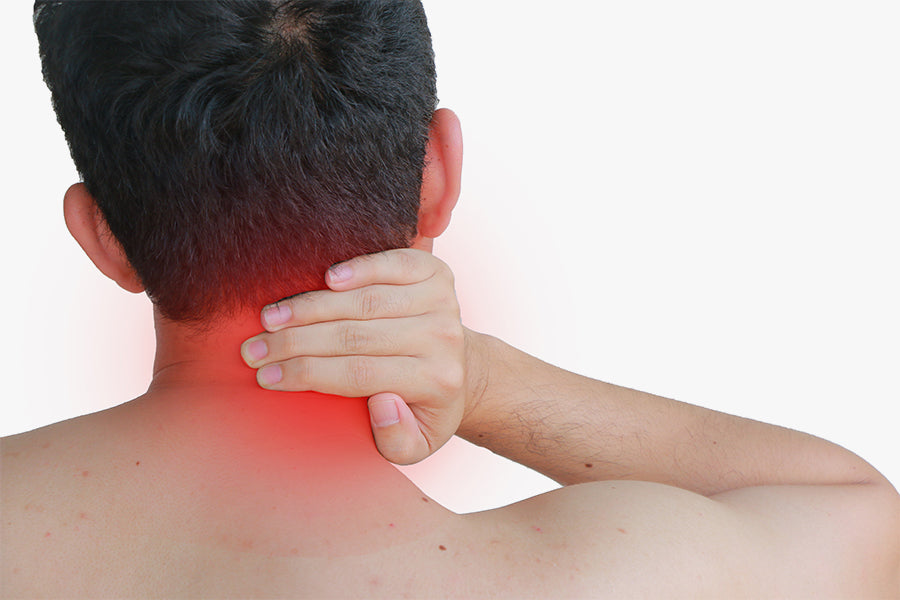
While neck exercises can provide numerous benefits, performing them incorrectly or overworking your muscles can lead to pain and injury. Strained muscles, worn-out joints, and nerve compression are common issues that may arise from improper technique or excessive resistance.
According to a study, overworking or misusing your neck muscles can lead to pain and injury. To minimize these risks and safely strengthen your neck, follow these guidelines:
- Start with light resistance and higher repetitions to build endurance gradually.
- Perform movements in a slow, controlled manner to prevent strain or sudden injuries.
- Increase resistance or weight progressively as your neck becomes stronger.
- Stop immediately if you experience pain or discomfort and allow time for recovery.
- If you're new to neck training or have any existing neck issues, consulting a fitness professional or physical therapist can help ensure proper form and prevent injuries.
Other Benefits
Building a stronger neck isn’t just about appearance, it plays a crucial role in overall health, posture, and injury prevention. A well-conditioned neck can reduce pain, improve mobility, and enhance athletic performance. Here are some key benefits of strengthening your neck.
- A thicker neck isn't just about aesthetics; it provides several functional benefits.
- Strengthening your neck can reduce pain from daily stresses like prolonged desk work or contact sports.
- Even individuals with chronic neck pain can benefit from building a stronger neck.
- Regular neck workouts help decrease tightness and improve flexibility.
- Performing neck exercises gradually increases your range of motion and supports better spinal alignment.
- Improved posture, enhanced athletic performance, and overall better health are additional benefits of a stronger neck.
Related Article: 4 Neck Strengthening Exercises for Boxers and Athletes
FAQs
1. How can I get a thick neck?
To build a thicker neck, focus on exercises like neck curls, extensions, side raises, flexion, and lateral flexion. Adjust your reps and sets based on your fitness level and incorporate them into your workout routine for the best results.
2. How can I make my neck bigger at home?
You don’t need a gym to strengthen your neck! Exercises like neck curls, extensions, and lateral flexion can be done at home with minimal equipment, making it easy to fit into your routine.
3. How can I get a muscular neck fast?
Building a strong, muscular neck takes consistency and progressive overload. While there’s no instant fix, gradually increasing the intensity and duration of your workouts will lead to visible results over time, typically within a few weeks or months.
4. What’s the best product for building a thick neck?
The DMoose Neck Harness is the perfect tool for strengthening your neck muscles. Designed for comfort and durability, it helps improve posture while effectively targeting neck muscles, making it an essential addition to your fitness routine.
Conclusion
Getting a stronger neck isn’t just for looks—it helps with posture, reduces pain, and makes you more resilient in sports and daily life.
By adding the right exercises to your routine, like resistance band moves or weighted training, you can build strength and stability over time.
Just remember to start slow, keep good form, and listen to your body to avoid injuries. A strong neck doesn’t happen overnight, but with consistency, you’ll feel the difference. So start today and give your neck the strength it deserves!
Reading List
- 4 Neck Strengthening Exercises for Boxers and Athletes
- 7 Quick And Easy Neck Exercises
- Unleash Your Power and Forge a Resilient Neck With a Neck Harness
- How to Use Neck Head Harness
Article Sources
- Cheung J, Kajaks T, MacDermid JC. (2013). The relationship between neck pain and physical activity. Open Orthop J, 7, pp. 521-29. DOI: https://doi.org/10.2174/1874325001307010521.







